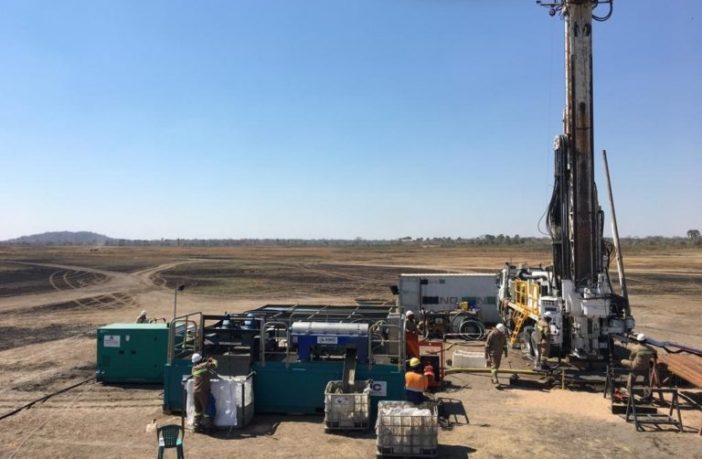- Zambia has both the geologic setting for geothermal and a history of efforts to exploit the energy.
- There are over 80 thermal springs in Zambia hosted in fault systems within Proterozoic basement rocks and associated largely with Karoo (Permian) era basins and also younger, East African Rift structures in the north-east of the country.
- With the help of REPP, Kalahari GeoEnergy reports having now commenced with its 2020 geothermal slim well programme in the country.
Historical drilling has established two distinct reservoirs: an extensive (>1km2), prodigious, 100-110OC shallow aquifer (from 200m), following permeable layers in the Lower Karoo (sedimentary) stratigraphy, being fed by a deeper 150-160OC zone within splay faults in the underlying Proterozoic basement rock. It is believed that the entire system is most probably fed from one source within Kafue Trough. It is the current view that both the shallow and deep resources could be developed for power generation and the current resource model remains in line with the previously announced 15MW in that part of the system currently being drilled.
Kalahari GeoEnergy has the permits, funding and contractors in place and is ready to drill a further three resource delineation slim wells in a programme which is so designed as to test both the shallow and deeper zones in the established up flow area.
Earlier this year it was announced that the UK government would help fund Kalahari GeoEnergy’s drilling of three new exploratory slim wells through a REPP approved convertible loan of up to USD 3.2million. Five of 18 earlier exploratory wells have intersected a near-surface aquifer with temperatures of more than 100°C. The slim wells will enable the collation of additional data for reservoir modelling, which will be used in pre-feasibility and feasibility studies to support the development of the 15MW power plant.
Kalahari GeoEnergy reports having now commenced with its 2020 geothermal slim well programme in the country.
For Zambia, the project represents a new source of sustainable baseload power, which would provide socio-economic uplift, climate mitigation through agro-processing and environmental enhancement in a protected area where there has been significant encroachment by human and domestic animals. This fits in with the New Energy Policy of 2019 and the current efforts by the Government to diversify the national energy mix to include renewable energy. The availability of energy will also assist in increasing the energy access rates of the Country and the attainment of its Vision 2030 plan.
Author: Bryan Groenendaal
Source: Kalahari GeoEnergy











